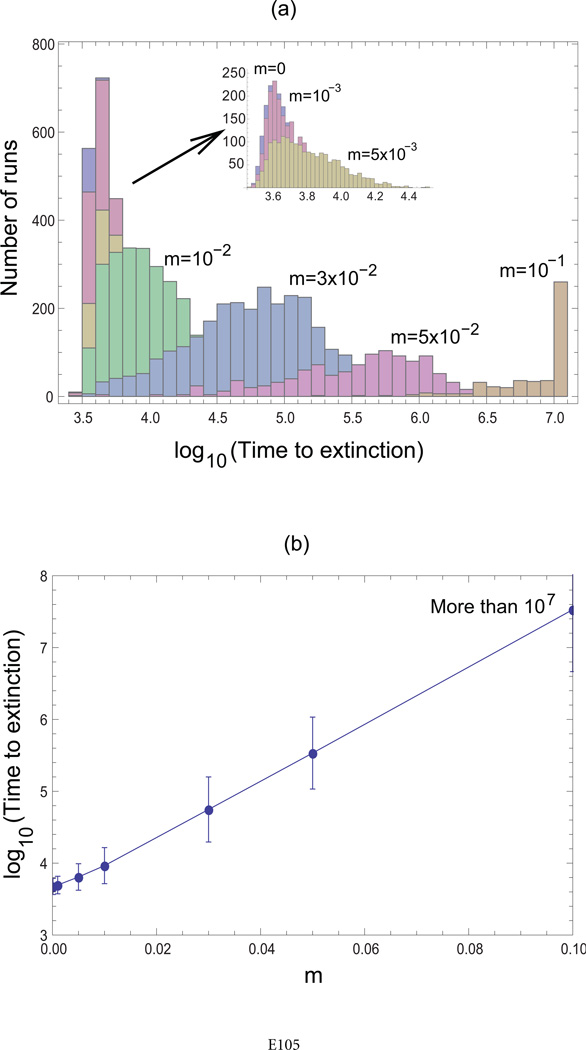Figure 6.
Effect of migration on the outcome of the agent-based model. In addition to the basic processes in the agent-based model, we now also assumed that an individual (uninfected or infected) can migrate with a probability m. A parameter combination was selected in which consistent extinction was observed for nearest-neighbor interactions while consistent persistence was observed in a mass-action setting, according to the definitions described in the text and figure 2. a, The nearest-neighbor model was run for a variety of migration probabilities, and the distribution of extinction times was documented by histograms. The outcome for relatively low migration rates is the same as the outcome observed in the absence of migration, as shown in the inset. As the migration probability becomes higher than the infection probability, time to extinction increases significantly and converges to the mass-action picture for high migration probabilities (i.e., no extinction for very long periods of time). b, As the migration probability approaches and exceeds the infection probability, the time to extinction increases exponentially. Parameters were as follows: R = 0.5, B = 0.01, A = 0.0005, D = 0, N = 30 × 30. Initial conditions are the same as in figure 2a.

